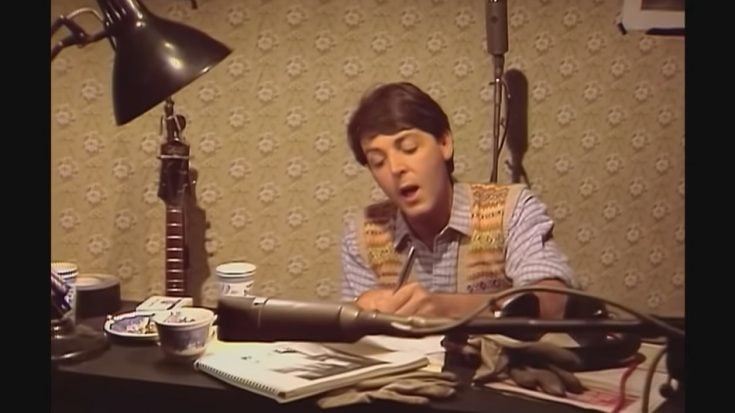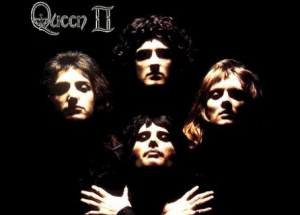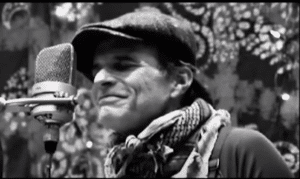Paul McCartney’s 7 Worst Songs Ever Made

Paul McCartney in 1980 - PAUL McCARTNEY / Youtube
Even the most devoted Beatles fans might hesitate to call any of their songs outright bad. After all, the band’s impact on music history is undeniable. Paul McCartney, the group’s bassist and one-half of their legendary songwriting team, churned out countless hits and innovative tracks that continue to resonate with fans today.
However, even the most prolific artists have occasional misses. Across The Beatles’ twelve studio albums, McCartney was responsible for over a hundred songs, and naturally, quality varied.
Some of his compositions, while undeniably McCartney, veer into territory that some listeners find overly whimsical or even corny, especially when compared to John Lennon’s edgier style. So, let’s take a look at a few of McCartney’s songs that haven’t quite achieved the same level of acclaim as his greatest hits.
“Hold Me Tight”
“Hold Me Tight” isn’t your typical Beatles hit. Though it landed on their second album, With The Beatles, it was actually an earlier recording from the Please Please Me sessions. Penned by McCartney in 1961, it was even part of their live sets before they were signed.
Both Lennon and McCartney have been critical of the track. McCartney called it “a failed attempt at a single” that ended up as “acceptable album filler.” The song itself is repetitive, relying heavily on the title phrase. While there are some melodic moments and harmonies, it feels like an early, unpolished effort.
John Lennon wasn’t a fan either, bluntly calling it “a pretty poor song” he had no interest in.
“Maxwell’s Silver Hammer”
Abbey Road is lauded for its groundbreaking sounds. Side A alone features the electrifying “Come Together”, Harrison’s timeless “Something”, and Lennon’s heavy-rocking “I Want You (She’s So Heavy)”.
However, Paul’s “Maxwell’s Silver Hammer” disrupts this momentum. John Lennon famously called it “granny music”.
Inspired by the dark story of a murderous student, the song’s slow pace and convoluted lyrics leave the listener feeling lost. The potentially catchy chorus feels forced and lacks the usual Beatles brilliance. Ringo Starr even called it the “worst session ever”, dreading the weeks-long recording process.
“Mother Nature’s Son”
While in India with the Maharishi in 1968, Paul McCartney found inspiration for “Mother Nature’s Son” from a lecture on nature. The song landed on The White Album, known for its massive tracklist. Notably, McCartney performed the entire track himself, singing and playing guitar across 25 takes.
This period saw tension within the band, and Lennon wasn’t thrilled about McCartney laying down the track solo. Despite this, UK newspaper The Independent ranked “Mother Nature’s Son” 15th out of 30 best White Album songs, calling it “emotional”.
However, some find the song overly simplistic. While the verses and chorus have a certain charm, they lack a strong direction. Even the “doo doo’s” in the catchiest part feel unnecessary, leaving the overall experience a bit underwhelming.
“Ob-La-Di, Ob-La-Da”
“Ob-La-Di, Ob-La-Da” from The White Album is a favorite among some Beatles fans. However, it falls short when compared to the band’s other work from this era.
The song features an awkward, almost skiffle-like beat and jangly piano notes. The lyrics, while typical of McCartney’s character studies, lack the depth and complexity of songs like “Eleanor Rigby”. Biographer Mark Lewisohn claims McCartney recorded it over sixty times and remained unsatisfied.
John Lennon openly hated the song, even resorting to getting high during production. He recorded his piano part much faster and louder than intended, creating a discordant mess that made it onto the final mix.
Rocky Raccoon
The White Album is known for its diverse musical explorations. However, “Rocky Raccoon” might be a case of experimentation gone wrong.
While some fans hold the song dear, it doesn’t quite reach the usual Beatles brilliance. Described as a loose “country ballad”, McCartney even adopts a goofy cowboy accent, admitting he was “spoofing a folksinger”. Lennon joins in with some Southern-fried harmonica riffs.
Even producer George Martin’s piano contributions, while technically skilled, grate a bit, resembling a saloon sing-along melody. Martin himself labeled the track mere “filler” used to pad out the double album’s runtime.
“Tell Me What You See”
“Tell Me What You See” from the Beatles’ 1965 album Help! stands out for being a less-than-stellar track on an otherwise fantastic LP.
The song features a Hohner Pianet, the same instrument used on “The Night Before”, giving it a sweet and lighthearted feel. However, this charm couldn’t save it from criticism. The UK music press called it “not awfully memorable” upon release.
“Tell Me What You See” reportedly drew inspiration from folk music, a genre the Beatles were starting to explore. Sadly, the arrangement and recording feel uninspired and even dry, especially when compared to the surrounding gems like “I’ve Just Seen A Face” and “Yesterday”.
When I’m Sixty Four
“When I’m Sixty-Four” is a curious case in Sgt. Pepper’s Lonely Hearts Club Band. Written by a 14-year-old Paul McCartney in 1956, it reflects his early musical influences, filled with “cabaret” vibes as he describes.
The song relies heavily on a simple clarinet trio, a stark contrast to the innovative pop and rock sounds that dominate the album. The New York Times‘ Richard Goldstein highlights this clash, noting that the “honest vision” is undermined by the inauthentic backing music.
Wedged between psychedelic masterpieces, “When I’m Sixty-Four” struggles to keep up. Critics have called it everything from “corny hokum” to a charming but ultimately pointless vaudeville sketch. Lennon reportedly disliked the song the most, solidifying its status as an outlier on this groundbreaking album.


















